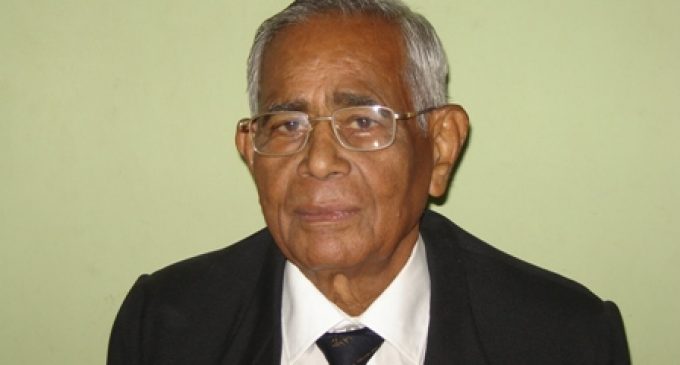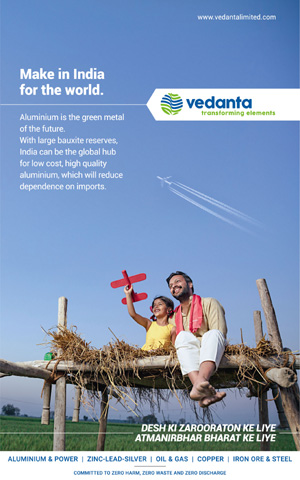India Should Give High Priority on Effective Water Resource Management

Prof. Dr. P. K. Jena
India with increasing population and rapid development of various industries and urban areas, is experiencing fresh water crisis since long.. Even after seventy five years of independence, it has not been possible for the Government to provide drinking water to all the citizens throughout the year. The country has more than 17% of world’s population but has only 4% of its usable water resources. Nearly 50% population of India particularly those in rural areas are deprived of getting fresh water for drinking during most part of the year. In recent decades, floods and droughts are occurring in different parts of the country more frequently because of improper management of land and water resources. Rapid deforestation and urbanization have helped most of the rainwater to drain out to the ocean. Nearly 20% of area of India is drought prone and about 40 million hectares of the land is flood prone. In addition to this, the wastes and effluents of the industries and urban habitation are mainly responsible for polluting a large number of surface as well as ground water bodies.
Low public conciousness about the overall scarcity and economic value of water, results in considerable wastage and its inefficient use. In addition to this, due to absence of proper national water policy, faulty planning, management, distribution and transport system, this valuable natural resource is not effectively utilized in promoting our agricultural and industrial developments as well as domestic requirements. The present precarious situation and mismanagement of water resource in India have resulted in several important concerns for the nation. Some of these are:
- Large parts of India have already become water stressed,
- There is a wide temporal and spatial variation in availability of water,
- Problems for providing drinking water throughout the year for all,
- Over exploitation of ground water with no control,
- Inter state and inter regional disputes in sharing of river water,
- No systematic plan and practices for rain water harvesting,
- Growing pollution of water bodies at point and non point sources,
- Bad maintenance of existing water resource infrastructure,
- Absence of inter disciplinary approach of water related problems,
- Faulty planning regarding water resource management.
- Unsatisfactory public and private involvement in water resource management,
- Lack of adequate trained personnel for applying modern technology in water resource conservation and development,
- Low public conciousness about overall scarcity and economic value of water and
- Faulty rules and regulations regarding water resource development and management.
Due to all these drawbacks, in India even after 75 years of Independence, the first and foremost programme to supply drinking water to all its citizens throughout the year has been far from success. Nearly 50 pct. of our population particularly those in rural areas, are deprived of getting fresh water for drinking during most part of the year. Due to unplanned urbanization and industrialization, both surface and ground water resources which were earlier being used for agriculture and domestic purposes, are being heavily shared by the industries and urban population. This situation is considerably affecting water demands in various sectors. In addition to these, vast amounts of wastes and effluents generated by urban habitation and industries are drastically polluting the rivers as well as ground water resources. In addition to these, extensive use of chemical fertilizers and pesticides in agricultural activities results in generation of a lot of polluted water from agricultural fields to nearby water bodies making those further more polluted.
Floods and droughts are occurring in different parts of the country every year because of improper management of land and water resources including rain water. Nearly 15-20% area of India is drought prone and about 40 million hectares of the land is flood prone. Every year on an average, floods affect both the cultivable and residential areas of around 7.5 million hectares.
With rapid industrialization and urbanization, the wetlands which are the major source of surface water as well as necessary for recharging the ground water, are fast disappearing in different parts of the country. Nearly 50% of country’s wetland has vanished mainly due to development of urban areas, industrial and agricultural activities. As a result, the possibility of getting the required amount of water for various purposes has declined considerably. Further, with disappearance of wetlands and cutting down large areas of forests, have resulted in rain water rushing back to ocean through rivers at a very fast rate without getting much opportunity to be retained on and under the ground. At the same time, with rapid filling up the river beds and the basins with soft earth taken away by rain water from the barren catchment areas, the rivers are getting more sallow and causing frequent floods in nearby areas.
Due to faulty nature of transportation of water from the main source to the users in agricultural sector as well as in industrial and urban complexes, a large amount of water get lost in the way. The system for supplying water for irrigation purposes at most places in India being primitive, a lot of water is lost through the earthen canal system. Again during the water supply to cities, commercial centers and industrial areas, through ill maintained pipeline transportation, about 30 to 40% of water is wasted.
In view of scarcity of water in different sectors mainly due to improper planning and mismanagement, it has been necessary to have an effective and appropriate National Water Policy in order to provide required amount of water to different sectors. In this process the domestic, agriculture and industry sectors can get required amounts of water. This would facilitate socio economic developments in various regions of the country.
Water resource projects being multi disciplinary in nature, in framing an effective national water policy, planning and implementation of projects, all concerned, should be fully involved. In this way it would be possible to achieve optimum utilization of water in different sectors along with environmental sustainability and bringing benefits to all the people in the country.
(The writer is Ex-Director General, CSIR. He is at present the Chairman of Institute of Advance Technology & Environmental Studies (IATES). He can be reached at prof.pkjena_iates@yahoo.com)






